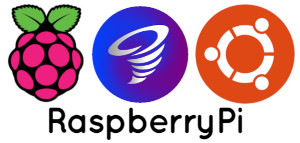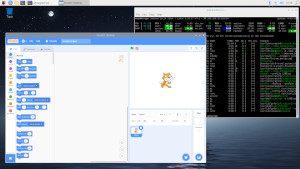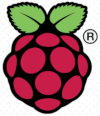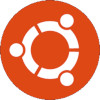 Most Teachers Network ECE courses require the use of a Linux workstation. We provide full workstation solutions based on the Raspberry Pi hardware (both RPI 3 and RPI 4). See our Workstations and Accessories page for more information. For many students this is the preferred solution as everything is already setup, installed and tested. All the student has to do is to hook up a monitor, keyboard, mouse, connect to either a wired or wi-fi network and run the first boot configuration wizard (started automatically on first boot). Schools or institutions without dedicated IT departments may find this approach to be more manageable and cost effective.
Most Teachers Network ECE courses require the use of a Linux workstation. We provide full workstation solutions based on the Raspberry Pi hardware (both RPI 3 and RPI 4). See our Workstations and Accessories page for more information. For many students this is the preferred solution as everything is already setup, installed and tested. All the student has to do is to hook up a monitor, keyboard, mouse, connect to either a wired or wi-fi network and run the first boot configuration wizard (started automatically on first boot). Schools or institutions without dedicated IT departments may find this approach to be more manageable and cost effective.
For those who want to build their own solutions from the ground up, we also provide the operating system images here. The procedures for flashing the image to a TF card are the same as all other Raspberry Pi distributions. We will eventually provide a How-To Guide covering the flashing and setup, but for now, please consult one of the many excellent online guides such as Installing Operating Systems Images from the Raspberry Pi Foundation.
We are also working on M.2 SATA and network boot (diskless) configurations which we plan to have available by the end of the year.
Teachers Network Linux Distributions
 Teachers Network Linux distributions are built for ECE students and education. Reliability and performance (in that order) are the driving forces behind our repackaging of Raspberry Pi OS, Twister and Ubuntu Linux. While most distributions provide a small installation image which can then be customized by the user, we build workstation solutions specifically targeting ECE students and teaching organizations. We have a re-partitioned file system layout that incorporates a 6GB real swap partition on the card. A full range of programming, electronics, desktop publishing and graphics editing applications are included. Our goal is to make as many of the needed applications across the ECE courses available without need for separate downloading and installation. Many other applications which we feel might be of interest to the ECE student are included. We want students to have a rich set of applications to explore in addition to what is needed by our courses. The ability to explore and ask “what if” questions is important in all areas of education including the computing environment in which they work.
Teachers Network Linux distributions are built for ECE students and education. Reliability and performance (in that order) are the driving forces behind our repackaging of Raspberry Pi OS, Twister and Ubuntu Linux. While most distributions provide a small installation image which can then be customized by the user, we build workstation solutions specifically targeting ECE students and teaching organizations. We have a re-partitioned file system layout that incorporates a 6GB real swap partition on the card. A full range of programming, electronics, desktop publishing and graphics editing applications are included. Our goal is to make as many of the needed applications across the ECE courses available without need for separate downloading and installation. Many other applications which we feel might be of interest to the ECE student are included. We want students to have a rich set of applications to explore in addition to what is needed by our courses. The ability to explore and ask “what if” questions is important in all areas of education including the computing environment in which they work.
For more information on hardware configurations and options please see our Workstations and Accessories page.
Raspberry Pi OS
 Raspberry Pi OS is the standard desktop operating system provided by the Raspberry Pi Foundation. It runs well on both Raspberry Pi 3B and 4B computers. At the time of this writing (August 2021) the 2GB model of the Raspberry Pi 4, which is priced the same as the Raspberry Pi 3B+, is difficult to impossible to purchase due to global chip shortages. During this period of time if you are looking for the lowest cost workstation solution, the model 3B+ is the only real choice. The distribution below was designed to run on the the 3B and performs well. When then markets return to a more normal state we anticipate the return of the 2GB Model 4B at which point more capable solutions such as Twister OS (see below) may be a more attractive approach with the model 3B eventually getting phased out (for workstation builds).
Raspberry Pi OS is the standard desktop operating system provided by the Raspberry Pi Foundation. It runs well on both Raspberry Pi 3B and 4B computers. At the time of this writing (August 2021) the 2GB model of the Raspberry Pi 4, which is priced the same as the Raspberry Pi 3B+, is difficult to impossible to purchase due to global chip shortages. During this period of time if you are looking for the lowest cost workstation solution, the model 3B+ is the only real choice. The distribution below was designed to run on the the 3B and performs well. When then markets return to a more normal state we anticipate the return of the 2GB Model 4B at which point more capable solutions such as Twister OS (see below) may be a more attractive approach with the model 3B eventually getting phased out (for workstation builds).
Raspberry Pi OS releases are available through the links below. The standard image file is xz compressed and can be uncompressed and flashed like any other Pi flash image (see above). If you’re on a Linux machine direct flashing can be done via dd:
# xzcat tn-release-image.img.xz | dd bs=4M of=/dev/sdX
where /dev/sdX is replaced with the device name the of the TF card and tn-release-image.img.xz replaced with the actual name of the compressed downloaded image. Just over 23GB will be written out to the TF card so it could take up to 15 minutes or so with USB 3 connected devices (longer with slower USB 2).
On first boot the system will resize the root file partition to fill the remaining space on the device. DO NOT turn the computer off during this process. The machine will then reboot in the the Raspberry Pi Desktop as the user ‘pi’ and run the first boot wizard. After completing this step, the machine should reboot one final time and come up with the Raspberry Pi desktop running as the user ‘pi”.
This distribution was developed for the Raspberry Pi 3 and installs fine in these environments. Testing against the Pi 4 has not been done, but should be complete within the next week or two. No problems are expected with Pi 4 hardware.
Download 08222021-tn-raspios-full.img.xz (7.5 GB) (6GB Swap Partition)
Download 07262021-tn-raspios-full.img.gz (15.4 GB) (16GB Swap Partition)
Twister OS for the Raspberry Pi (32-bit)
 Twister OS is a new operating system built on top of Raspberry Pi OS. It offers many interface themes greatly enhancing the look and feel of the user interface. Users who prefer the look and feel of the various Windows or MacOS interfaces will feel right at home. Several enhancements and applications on top of the standard Raspberry Pi OS offerings are provided. For a more complete description check out the Twister OS website.
Twister OS is a new operating system built on top of Raspberry Pi OS. It offers many interface themes greatly enhancing the look and feel of the user interface. Users who prefer the look and feel of the various Windows or MacOS interfaces will feel right at home. Several enhancements and applications on top of the standard Raspberry Pi OS offerings are provided. For a more complete description check out the Twister OS website.
Twister OS runs on the Raspberry Pi 4 models (no support for the model 3B). We are currently testing on the Pi 4 (2GB and 4GB modes) and like what we see. This section will be updated once our testing is complete and we have our first distribution ready to share. In the meantime if you’re interested in Twister OS please check out their site and you can download their standard distribution directly.
Ubuntu MATE 64-bit for the Raspberry Pi
 We have been running Ubuntu 64-bit with the MATE desktop on Raspberry Pi 4s now for over a year with very few problems. These have acted as our main desktop with each machine equipped with dual 4K monitors. While clearly not suitable for CPU or GPU intensive applications such as gaming or video editing they have been more than up to the task for day to day uses (web, office, software development, remote monitoring, etc). At the time of this writing (1 August 2021) we still have the RPI 4 testing of Raspberry Pi OS to complete, but as soon as this is done will move on to putting together a similar image for Ubuntu MATE for the Pi 4. When complete we will update this section to include anything specific to this release.
We have been running Ubuntu 64-bit with the MATE desktop on Raspberry Pi 4s now for over a year with very few problems. These have acted as our main desktop with each machine equipped with dual 4K monitors. While clearly not suitable for CPU or GPU intensive applications such as gaming or video editing they have been more than up to the task for day to day uses (web, office, software development, remote monitoring, etc). At the time of this writing (1 August 2021) we still have the RPI 4 testing of Raspberry Pi OS to complete, but as soon as this is done will move on to putting together a similar image for Ubuntu MATE for the Pi 4. When complete we will update this section to include anything specific to this release.
Due to memory demands of Ubuntu (and most other full operating systems) we only test and work with the Rasbperry Pi 4 8GB model. While in theory it could run on the 4GB model, our monitoring has shown that memory usage is very often well over 4GB of physical memory when doing daily tasks. The added virtual memory could cover this however performance would suffer as would the expected life expectancy of the TF card.
If you’d like to check out the standard Ubuntu 64-bit desktop for the Raspberry Pi it can be downloaded directly from the Ubuntu site.


